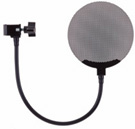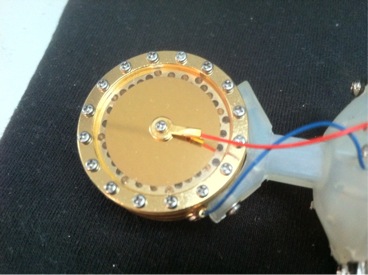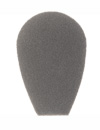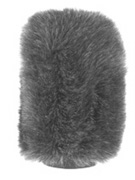When recording vocals up close, a pop filter will be beneficial in protecting against plosives – bursts of unwanted energy generated by the letters b, p, and t. These plosives can overwhelm various stages of the signal path, from microphone through preamp, compressor and recorder. The best way to get rid of them is to filter them out at the source, before the microphone. Traditionally, a fine mesh stretched over a wire frame has been used, but better results are being achieved with all metal pop filters, like the Royer Labs PS-101 (shown below).

Pop filters are also useful in protecting the diaphragm against saliva, which is not healthy for condenser microphones (see #8 below – Humidity)
This is how your capsule should look:

Not like this:

Wind Screens are actually designed for outdoor use. They are usually designed out of thick foam or an artificial fur. They are great problem solvers but do reduce frequency response so they are only recommended when needed, not as a substitute for a quality pop filter. Examples shown: Royer Labs WS-58 foam windscreen (left) and WS-12 windscreen (right)

